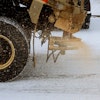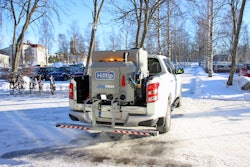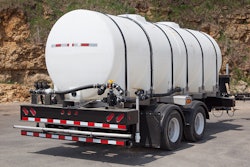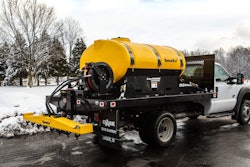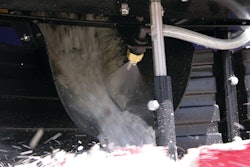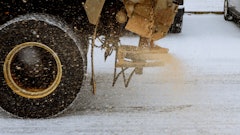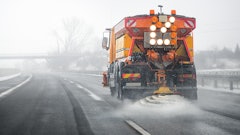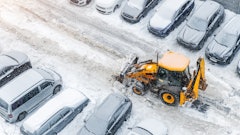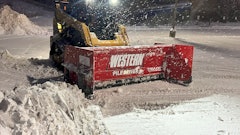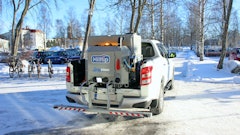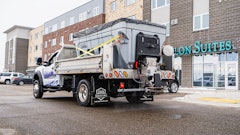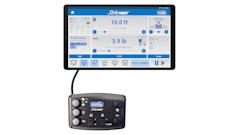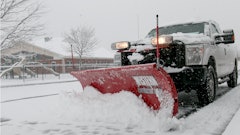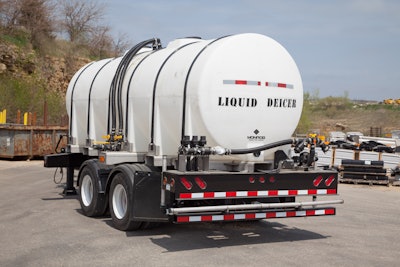
Across the country engineers, snow and ice equipment manufacturers, climate scientists and truck operators work together to create and implement solutions that can effectively clear roads and walkways and keep residents safe. Over the years, new and creative solutions have come to light that can save labor time, save on material usage and use materials that are safer for the environment. Liquid anti-icing was one such breakthrough, changing the approach to snow and ice management.
Though the technique has been around since the 1990s, it has only recently been widely adapted by communities across the country. There are so many advantages to liquid anti-icing, but it isn’t always a seamless experience adding these techniques to your snow and ice management strategy. Here's how to incorporate anti-icing into a snow and ice management strategy.
What is anti-icing?
Anti-icing is a technique designed to reduce the need of de-icing (plowing and salting) after a snow storm. Essentially, it’s a way to prepare the ground to “reject” bonding to snow and ice. A thin layer of liquid chemical compound, often liquid sodium chloride, is distributed on the street prior to a snow event, and it greatly reduces the products and labor needed to clear the roads during or after snow fall and freeze.
This technique gives municipalities an opportunity to create a proactive approach that not only reduces the amount of man-power it takes to clear an area, but is a way to better protect drivers and pedestrians as they travel during or after a snow storm.
Getting ahead of a storm allows operators to better prepare for a major snow and ice event. Because the bond between the ice and road is minimized, it ultimately creates less work for the team during or after the storm, getting roads cleared safer and more effectively.
The minimized bond between the snow and the road allows for plows to clear quicker and more effectively, saving crews hours of re-plowing and distributing granular de-icers. By preventing bonds from forming before the storm, it takes fewer workers less time to remove snow and ice. These labor cost savings can be reabsorbed by the business and used in other areas of need, or reinvested into the company.
Reduce scatter
Rock salt can quickly bounce and scatter across the road, reducing efficacy. Liquid solutions are sprayed and can generally stay in place, ensuring the application area can reduce bonding.
Easier on the environment
The reduction of granular material is friendlier to the environment. The less granular salt needed, the less material is displaced by high traffic or slopes in the roads that eventually lead to waterways.
Start with training
While anti-icing is incredibly effective, it does take a fair amount of retraining to understand how to best use liquid material. There is a dynamic between temperature, timing and the solution created. While liquid sprayers are becoming more and more common, your team will still need time to understand how to effectively anti-ice with liquids. Depending on the liquid solution you choose, you may have to pay attention to the temperature of the pavement when you’re anti-icing. Certain liquids have more strict requirements than others.
Calibration looks different as well and depends on the liquid spreader you are using and the area you need to cover. The Clear Roads Technical Advisory Committee has information to get you started but your equipment manufacturer should be able to help you calibrate for the equipment and material you use.
In addition to understanding calibration and the quirks of liquid distribution, the team will also need to learn how to safely handle the liquid material, no matter which solution you decide on. Make sure to distribute Material Safety Data Sheets to the entire team.
Determine priority zones
When a team begins adapting anti-icing techniques, it's likely that they don’t have the amount of equipment or materials needed for all of their areas of responsibility before a storm. Determining priority zones or roadways can help make the most of any anti-icing efforts. Looking at factors like traffic volume, traffic speed, important bridges, residential or institutional density and other factors can make sure you’re treating the areas that need it most.
Utilize the right equipment
Liquid anti-icers need completely different storage and distribution equipment than granular de-icers. Instead of spreaders, you need tanks, nozzles and pumps. The great thing about anti-icing is you don’t need to replace your entire fleet of plows and spreaders, investing in a few anti-icing trucks or trailers can make an incredible difference for your budget and team.
Look at the long-term vision
Successful anti-icing requires a completely distinct way of approaching snow and ice management. Between the retraining, investing in new equipment and proactive work schedules, utilizing liquid anti-icers will require big changes from your team. However, once the strategy is set in motion it can result in long term advantages for your community’s budget, labor challenges and safety.

